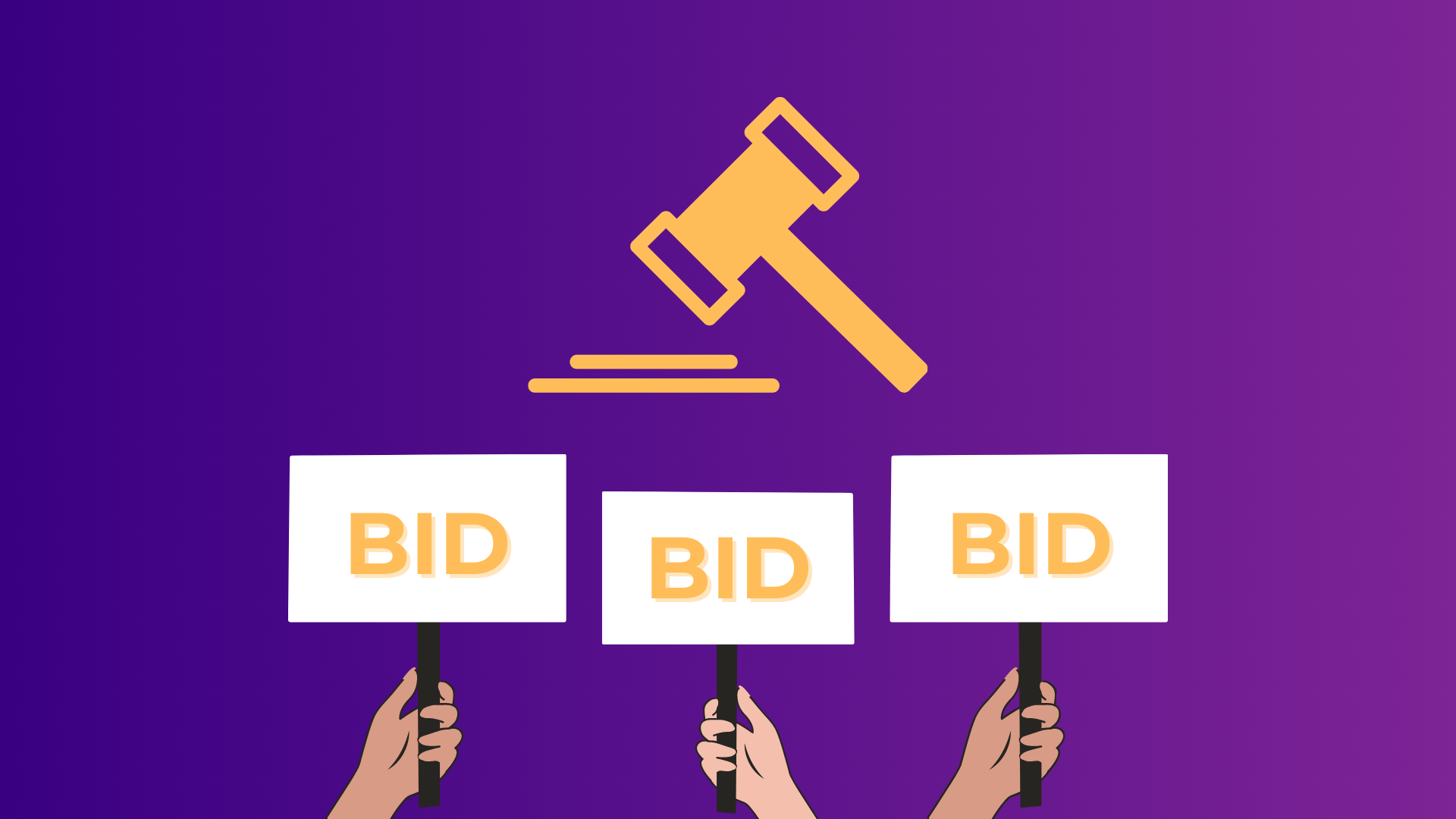Header Bidding for Publishers- Complete Set-up Guide
The advertising industry is experiencing a thriving phase, with significant growth anticipated in digital ad revenue. Publishers, creators, and publishing sites are capitalizing on the power of online ads, with programmatic advertising at its core. Notably, late 2022 projections from Statista highlight a remarkable growth trajectory of approximately 6% for ad media owners, reaching an unprecedented milestone of 856 billion U.S. dollars in 2023.
However, amidst the industry’s overall triumph, certain publishers find themselves grappling with stagnant ad revenue. Header bidding is the solution that can potentially address this challenge.
Among 1 million websites receiving the largest traffic, 2.6% were using header-bidding technology in June 2022.
This innovative technique catalyzes for publishers to tap into untapped revenue streams, optimize their ad inventory, and establish long-term sustainable growth. Header bidding is a powerful technology to navigate the dynamic landscape of digital advertising and seize new avenues for monetization. Through its implementation, publishers can gain a competitive edge by creating a more favorable environment for their ad inventory.
What is header bidding in programmatic advertising?
Header bidding is a technique within the programmatic advertising ecosystem that enables publishers to simultaneously offer their ad inventory to multiple demand sources, including ad exchanges, networks, and direct advertisers, before serving ads. By conducting an auction among various demand partners, header bidding enables publishers to auction each ad slot individually to the highest bidder obtaining the highest bid for each ad impression.
It introduces increased competition and improved yield management, ultimately optimizing ad revenue opportunities for publishers within the programmatic advertising landscape. Header bidding can be seen as a type of auction as it can also include private auctions or programmatic direct deals where selected advertisers or preferred partners participate in the bidding process.
Waterfall Model vs Header Bidding
The waterfall structure was the dominant approach used in the digital advertising industry before the rise of programmatic advertising. Within the programmatic ecosystem, header bidding emerged as a solution to further enhance website monetization for publishers. To understand the difference let’s take a deeper look at their history of header bidding and the waterfall model.
What is the waterfall model?
The waterfall model was the traditional approach used in the digital advertising industry to sell and serve ad impressions. It involved a sequential process where ad impressions were passed down through a predefined hierarchy of ad networks or demand partners. In this model, the ad impression was first offered to the top-tier ad network or demand partner. If they did not have a suitable ad to serve, the impression would then be passed down to the next ad network in the waterfall. This process continued until an ad was successfully served or until the impression reached the bottom of the waterfall without being filled.
What were the limitations of the waterfall model?
The waterfall structure had several limitations, including inefficiency and fragmentation. It often resulted in lower fill rates and missed revenue opportunities for publishers, as the ad impressions would pass through each network in sequential order, potentially leaving unsold inventories.
Programmatic advertising facilitated the instantaneous buying and selling of ad impressions more dynamically and competitively. It eliminated the need for a rigid sequential process, allowing multiple demand sources to bid on ad impressions simultaneously.
The rise of header bidding solution
Within the programmatic ecosystem, header bidding emerged as a solution between 2014-2015 to enhance the revenue potential for publishers. It allowed publishers to offer their ad inventory to multiple demand sources simultaneously, shifting from the sequential waterfall approach to a parallel bidding model.
Header bidding increased competition among demand partners, resulting in potentially higher bids and improved revenue for publishers. The adoption of this technique in programmatic advertising has gained momentum in the industry due to its ability to drive better monetization outcomes. Publishers have embraced header bidding as a way to optimize their ad revenue by accessing more demand sources, maximizing competition, and obtaining higher bids for their ad impressions.
Header bidding is a complex component of the programmatic advertising pipeline. While it may seem simple from an end-user perspective, behind the scenes, there are various technical intricacies involved in setting up and managing header bidding integrations. Ad servers like DoubleClick for Publishers (now known as Google Ad Manager) have played a significant role in promoting and facilitating the adoption of header bidding by providing the necessary infrastructure and tools for publishers to implement it effectively.
How does header bidding work?
Here is a step-by-step overview of how header bidding works:
- Website visit: The user visits a website or loads a webpage with available ad inventory.
- Header Tag integration: The publisher’s website integrates a header bidding wrapper or tags into its page code, which triggers the header bidding process.
- Request for bids: The header bidding wrapper sends simultaneous bid requests to multiple demand partners, including ad exchanges, SSPs, ad networks, or direct advertisers.
- Auction among demand partners: Demand partners receive the bid requests and evaluate the ad impressions based on targeting parameters. Each partner submits their bid for the impression.
- Bidding process: Bids from demand partners are collected and compared in real-time to determine the highest bid. Factors like floor prices and priority rules set by the publisher are considered.
- Winning bidder selection: The demand partner with the highest bid wins the auction and is chosen as the winning bidder.
- Ad rendering: The winning bidder sends the ad creative to the publisher’s website, where it is displayed to the user within the ad slot.
- User engagement: Users interact with the website, viewing or clicking on the displayed ad.
For header bidding to work efficiently and maximize its benefits, publishers need to set it up effectively.
How to set up header bidding?
Here are some key steps for publishers to ensure the successful implementation of header bidding.
- Select demand partners
To maximize the competition for their ad inventory, publishers should focus on identifying demand partners that align with their website’s niche and target audience. They should consider the types of advertisers, industries, or verticals that are most relevant to their content or user base. By looking for demand partners that specialize in those areas or have a strong presence in the target market, publishers can increase the chances of attracting high-quality advertisers and generating competitive bids.
When publishers search for relevant demand partners in the header bidding setup, it is important to consider a wide range of ad tech platforms beyond just DSPs (Demand Side Platforms). While DSPs are commonly associated with programmatic advertising, header bidding allows for collaboration with various types of demand partners, including SSPs (Supply Side Platforms), ad exchanges, and ad servers.
In addition to DSPs, publishers should explore the offerings of SSPs, which connect them with multiple demand sources and help facilitate the auction process. SSPs provide access to a wide range of demand partners, including ad exchanges and networks, offering broader opportunities for monetization.
- Choose header wrapper
A header bidding wrapper serves as a centralized solution that streamlines the management of multiple demand partners in the header bidding process. Without a wrapper, publishers would need to handle each demand request separately, integrating individual codes from different ad tech platforms. This can lead to increased complexity and inefficiency, making the website heavier and potentially slowing down its load time.
Prebid.js is the leading open-source header bidding wrapper utilized by a vast number of publishers and publishing sites. With its adoption by over 100,000 websites worldwide, Prebid.js has gained significant popularity. It is a community-driven project and is available for free.
- Install and configure the wrapper
To install and configure the header bidding wrapper, publishers need to incorporate its JavaScript code into the header section of their website. This will enable the header bidding wrapper to handle bid requests, manage auction mechanics, and collect bids from the demand partners. It provides a standardized interface for demand partners to participate in the auction and submit their bids. The wrapper also ensures that the auction runs smoothly and efficiently, maximizing the competition among demand partners and potentially increasing ad revenue.
If publishers are using Prebid.js as their header bidding wrapper, they can configure it by editing the Prebid.js configuration file. This file contains settings and parameters that control the behavior of the wrapper, such as bidder codes, timeout settings, and floor prices.
- Set bidder parameters
Once the bidder wrapper is in place, publishers can then proceed to define the specific bidding parameters that govern how advertisers participate in the auction. The bidding parameters are usually set within the bidder wrapper or the ad server, allowing publishers to customize the rules and criteria for participating advertisers.
This includes factors such as bid floors, targeting options, ad quality standards, and other specifications that help optimize the auction process and ensure the best possible outcome for both publishers and advertisers.
- Define ad slots
When setting up header bidding, publishers need to identify the specific ad slots or ad units on their website where header bidding will occur. These ad units represent the areas on the webpage where ads will be displayed. Publishers must provide details such as the sizes and positions of the ad units, which are essential for demand partners to determine their bidding strategies.
Along with specifying the sizes and positions of the ad units, publishers may also need to define the ad formats as part of the header bidding setup. Ad formats refer to the specific types of ads that will be displayed within the ad units.
Different ad formats can include display ads, video ads, native ads, or rich media ads, each with its own specifications and requirements. By defining the ad formats, publishers can communicate to the demand partners the type of ad experiences they want to deliver to their audience.
For instance, if a publisher prefers to display video ads within a specific ad unit, they would need to indicate the ad format as video and provide the necessary details such as the maximum video duration and any specific video player requirements.
- Test and optimize header bidding
Once the header bidding configuration is complete, including the integration of the wrapper, configuration of demand partners, and definition of ad slots, publishers should proceed with testing the setup to ensure its proper functionality.
During the testing phase, publishers can monitor the performance of the header bidding implementation, assess the bidding dynamics, and evaluate the revenue generated by different demand partners. This testing process helps identify any issues or discrepancies and allows publishers to make necessary adjustments to optimize their header bidding setup.
Once the initial testing is complete, publishers can further optimize their header bidding setup by analyzing the performance data and making data-driven decisions. This includes adjusting the order in which demand partners participate in the auction, fine-tuning the configuration settings, or even exploring new demand partners based on the insights gained from the testing phase.
Or simply partner with header bidding setup providers.
For publishers with limited technical expertise, partnering with header bidding providers or ad networks that offer header bidding setup services can be highly advantageous. These specialized partners have in-depth knowledge of header bidding and can provide valuable assistance in setting up and optimizing ad revenue through this advanced advertising technique.
A successful header bidding setup is an excellent starting point for publishers to enhance their website monetization strategy. While fine-tuning and optimization may take time, it’s important to remember that it’s an ongoing process that allows publishers to refine their header bidding implementation over time.
By starting with a solid foundation, publishers can attract more advertisers and demand sources, resulting in increased competition and potentially higher ad revenue. With continuous monitoring and insights into performance metrics, publishers can make informed optimization choices, such as adjusting bid floors, testing new demand partners, or optimizing the priority of ad networks.




Leave a Reply